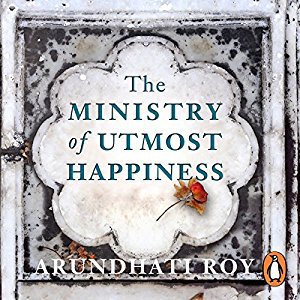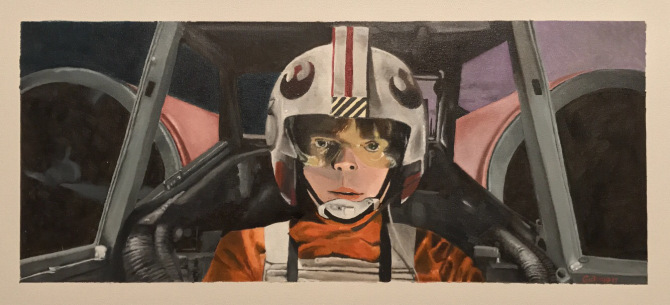The Ministry of Utmost Happiness – Arundhati Roy
So, instead of reading, I listened to this one as an audiobook. It felt almost like cheating! It was a very different experience and I found it quite difficult to follow the plot. Though, I don’t think that was only due to the experience of listening to a book rather than visually seeing words on a page. The Ministry of Utmost Happiness is a complex and exhausting novel, covering a great deal of time, characters and historical information, often breaking away from the storyline to describe the physical and political landscape. This is dissimilar to Arundhati Roy’s first book, The God of Small Things, which although touches on many of the same themes, felt to me much more contained, focussing on a family.
In an interview with the Guardian, Arundhati Roy said: “To me there is nothing higher than fiction. Nothing. It is fundamentally who I am. I am a teller of stories. For me, that’s the only way I can make sense of the world, with all the dance that it involves.” Perhaps that is what she is doing through this novel and that is why it is fragmented – like a dance trying to make sense of the world and as chaotic as the characters’ experiences: “They continued to float through their lives like a pair of astronauts defying gravity”.
What stood out for me with Arundhati Roy’s writing, as with The God of Small Things, was the way even the most ordinary things are given the most beautiful descriptions. This was perhaps intensified by hearing the words in her own voice. She writes of “raw haunting music” that “shook the dust of the stars” and the heat that “shimmered on the streets like a belly dancer”. She seems to care for her characters by giving them attention and warmth. The little girl they take in to look after, the ‘mouse’, is said to “[absorb] love like sand absorbs the sea” and the character Saddam Hussein who works as a security guard has eyelashes that “looked like they worked out in a gym”.
Consideration is given throughout the novel to language itself and the way in which it helps create the world we live in. At the beginning, when the mother finds out she has given birth to a transgender child, she is described as falling “through a crack between the world she knew and worlds she did not know existed”. She considers that in her language, Urdu, everything is masculine or feminine, even objects so “was it possible to live outside language?” In this world, language restricts understanding and almost denies a place for this baby.
Arundhati Roy seems to play with language to show how she can change the reader’s (or listener’s) experience. For example, on several occasions in the novel, she uses incredibly long lists with repetition (for example items of ‘steel’) which is uncomfortable and breaks the flow of the prose. She also draws attention to the book as a book by talking to the reader through the reading of one of the central character’s notebook, for example, “Question 1: what is the moral of the story?”
Language also creates irony: in disdain for media invasion, she writes that the “breaking city” is shown as “breaking news”, and “no one pointed out the irony”, by her writing she does just this and her tone is often sarcastic. Words from the notebook: “I would like to write one of those sophisticated stories in which even though nothing much happens there’s lots to write about. That can’t be done in Kashmir. It’s not sophisticated, what happens here. There’s too much blood for good literature” also seem ironic – Roy is creating literature out of Kashmir, though not in a conventional way.
The novel spans decades and momentous world events take place in its duration. They watch the twin towers on TV on 9/11 “[buckle] like pillars of sand”, distant and foreign. Roy demonstrates the fragility of life and human created-things, as well as the destructive power humans themselves create. The ensuing war brings warplanes that “sang in their skies like unseasonal mosquitoes” and fleeing people.
The story itself mainly follows Anjum (a hermaphrodite) various stages of her life and the people that come in and out of it, as well as the background of Delhi during the course of her life. There is also the narrative following Tilo (an activist with the notebook), and the happenings surrounding her in Kashmir. The two eventually meet. There are many other minor characters throughout the course of the novel with their own sub-plots. Roy challenges gender stereotypes and questions existing structures. She points out the senselessness of certain boundaries, for example, women not being allowed in the cemetery; “was it to protect the grave from the women, or the women from the grave?” It is not just gender boundaries she exposes, but those of religion, caste, politics and space. To Arundhati Roy, however, all are valuable, often choosing to focus on those shunned by society.






